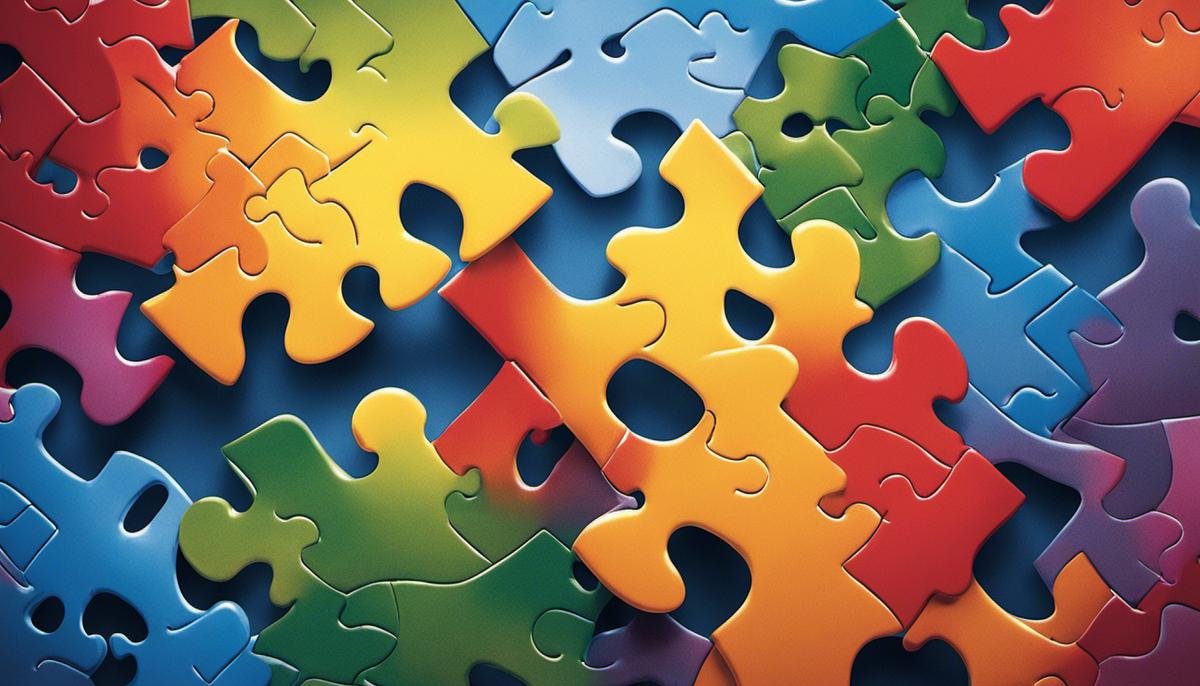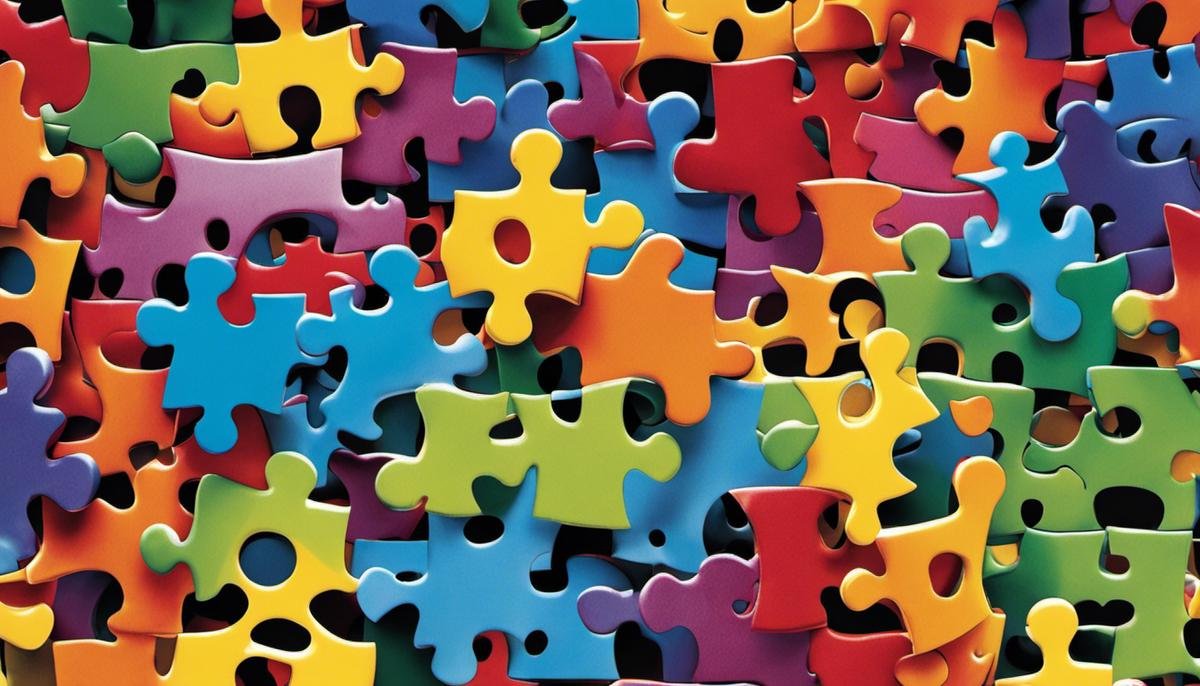
The complexities of autism spectrum disorder (ASD) continue to fascinate and perplex scientists, physicians, and educators alike. Rooted in a blend of genetics and environmental factors, this developmental condition manifests in a spectrum of symptoms and behaviors. While understanding autism requires delving into the intricate web of its genetic links, acknowledging the significant impact of environmental factors is also crucial. This multifaceted investigation requires a comprehensive appreciation of autism’s essence, an exploration of the genetic underpinnings it might inherit, the potential environmental contributions, and the interplay between them. Furthermore, providing a supportive and understanding environment for children with autism is vital in helping them to thrive.
Understanding Autism
What Exactly is Autism and How Does it Affect Individuals?
Whether you’re a parent, a teacher, or an interested friend, understanding Autism Spectrum Disorder (ASD) can deepen bonds and improve communication with the children and adults in your life who have autism.
In short, Autism Spectrum Disorder is a neurodevelopmental disorder. It’s termed ‘spectrum’ due to the wide range of symptoms and severity that individuals can possess. Autism affects an individual’s ability to communicate and interact with others, often presenting challenges with social skills, speech, and nonverbal communication.
Autism varies considerably from person to person. Some individuals might require significant support in their everyday lives, while others may live entirely independently. With a focus on their different capabilities rather than limitations, it’s important to understand autism as a part of an individual’s identity.
When considering the effects of autism, it’s important to remember it’s not a disease that needs curing, but a different way of experiencing the world. Individuals with autism often need support in specific areas and may have unique strengths and abilities in others. Many have exceptional abilities in visual skills, music, math, and art.
Folks with autism often prefer routines and struggle with changes in their schedule or environment. They also might have difficulty with understanding other’s feelings or talking about their own. This doesn’t mean they don’t feel empathy or have emotions, but they might express them differently.
Children and adults with autism may communicate, interact, behave, and learn differently. Some might learn quickly, while others may need more time to understand new concepts. It’s crucial to adjust our expectations and be patient, understanding, and communicative about their unique experiences and needs.
Early intervention is beneficial, which is why understanding the signs of Autism Spectrum Disorder is essential. Some early signs include a lack of response to their name by 12 months, a lack of eye contact or shared interests, obsessive interests, or a delay in language or social skills.
Living with Autism Spectrum Disorder can be challenging, but it doesn’t diminish an individual’s ability to lead a fulfilled life- it makes everyone’s experience more varied and rich. Society must continue growing in understanding, acceptance, and advocacy for those among us on the spectrum. Remember, every individual with autism is unique and, with support and accommodation, can make valuable contributions to society.
In conclusion, let’s keep these conversations going. Let’s continue learning, understanding, and advocating. Because the world is a better place when it’s built together.

The Role of Genetics in Autism
The Role of Genetics in Autism: A Deeper Understanding
For the longest time, autism remained a subject shrouded in mystery. With scientific and medical advancements mutating at an exponential rate, however, there’s more clarity now about the genetic linkages associated with Autism Spectrum Disorder (ASD).
Contrary to some myths, there is no single ‘autism gene’ that determines whether an individual will develop ASD. Genetics play a part, yes, but it’s a complex interplay of multiple genes, and possibly environmental factors too. Several recent studies peg that anywhere between 400-1000 genes could be connected to ASD!
Exciting, isn’t it? But remember, it doesn’t mean having certain genes guarantees a diagnosis. No, it just signifies a higher likelihood. Even identical twins, with precisely the same genetic makeup, don’t always share an autism diagnosis. This illustrates the ‘multifactorial’ nature of autism – a complex orchestration of multiple genes along with environmental influences.
Genetic mutations, both inherited or new (referred to as ‘de novo mutations’), appear to contribute to ASD. Some researches suggest that inherited mutations have more consistent links to autism, while de novo mutations tend to be connected with more severe cases.
Certain genetic conditions also seem to co-occur frequently with autism, like Fragile X syndrome or Tuberous Sclerosis. But, such conditions only account for a small percentage of cases. In most instances, the genetic factors contributing to ASD are unique to each individual.
Now, let’s ponder on another crucial aspect – prenatal factors. A growing body of research indicates that maternal health and conditions during pregnancy could influence the risk of autism, such as maternal obesity, diabetes, or use of certain medications during pregnancy.
Although the evidence is still nascent, experts believe that these prenatal conditions may interact with the baby’s genetic makeup, increasing ASD risk.
All these nuances underscore the fact that genetics and autism make a complex puzzle that we’re still putting together. But unravelling this mystery can pave the path for significant developments – from early detection, more valid diagnoses, to targeted treatments.
Moving forward, it’s essential not just to disseminate this knowledge far and wide, but also to boost research funding, foster inter-disciplinary collaborations and equip ourselves to better support families coping with autism.
In this journey, let’s ensure that understanding, acceptance, and advocacy are our constant companions. While we navigate this complex maze of genetics, let’s not forget to celebrate every little inch that our amazing ASD warriors conquer in their unique ways. After all, isn’t that what makes life beautiful – its splendid variety!

Environmental Factors and Autism
As we delve deeper into the intricacies of Autism Spectrum Disorder (ASD), knowledge on the genetic and environmental influences on autism becomes critical. Dissipating the erroneous notion of a so-called ‘autism gene’ is vital. There isn’t a single gene responsible for autism; instead, there’s an interplay of multiple genes, a mix of inherited and de novo mutations, assisted by environmental factors that contribute to the complexity of ASD.
Interestingly, there’s a vast number of genes – up to 400 to 1000 – linked to autism. But even the presence of certain genes doesn’t guarantee an autism diagnosis. Each individual with autism presents unique genetic factors, making the condition multifactorial and extremely varied in its manifestation.
It’s also important to note that certain generic conditions co-occur with autism. Prenatal conditions, too, influence the risk of autism. These prenatal factors do not operate in isolation; they interact with the genetic makeup, contributing to the ASD risk. This blend of conditions makes both diagnosing and understanding autism both challenging and fascinating.
Unravelling this genetic enigma has immense implications. Pinpointing the genes involved in autism can open doors to early detection, valid diagnoses, and targeted treatments. By understanding the influence of environmental factors, we can put preventive measures in place and create supportive environments that nurture rather than hinder.
However, this scientific endeavor requires tremendous resources, including knowledge dissemination, increased research funding, fostered collaborations, and supportive networks for those navigating autism. But, it isn’t just researchers and professionals who play a crucial role in this endeavor – parents, caregivers, and the community at large are equally integral.
When families are more attuned to the complexities of autism, they are better equipped to provide support, accepting the differences instead of fitting the child into a mold. Schools and communities can build accepting and supportive environments focused on understanding individual variations, rather than a one-size-fits-all approach.
Moreover, advocacy plays a powerful role in shaping a receptive society. As communities become more educated about autism, the stigma surrounding these conditions slowly starts to ebb. Advocacy also leads to better policies and regulations, safeguarding the rights and interests of those with autism.
In conclusion, both genetics and environment play indispensable roles in the realm of autism. Unraveling these complexities requires concerted efforts from all quarters – researchers, families, and communities. By fostering understanding, acceptance, and advocacy for individuals with ASD, we ensure they are not only accepted but celebrated for their unique abilities and perspectives they bring to the world.

Interplay between Genetics and Environment
Delving Deeper into Autism’s Complex Nature: Genetics, Environment, and their Interplay
As we dive deeper into the intricate nature of Autism Spectrum Disorder (ASD), it’s clear that the causes and impacts cut across various dimensions, fostering understanding and acceptance which is rather essential. Until recently, there seemed to be an undying question, “Is there an ‘autism gene’?” Well, recent scientific advancements have debunked this idea. It turns out there’s a multiplicity of genetic factors in the mix, with numerous genes that have been linked to autism. Yes, several hundreds (400-1000) to be more precise!
It’s a rather complex genetic puzzle with an inherent variability. Each person with autism is uniquely affected, indicated by unique genetic factors and their complex interactions with environmental conditions. This is why it’s a challenge to find a guaranteed diagnosis despite the presence of certain genes.
Moreover, the co-occurrence of certain genetic conditions with autism adds yet another layer to the multifactorial nature of autism. It’s becoming increasingly clear that autism is far from a one-gene, one-outcome condition. What’s more, there is intriguing evidence showing the influence of prenatal environmental factors increasing autism risk. Therefore, understanding how prenatal conditions interact with genetic makeup is crucial to understand ASD risk better.
Unraveling this genetic puzzle is more than just satisfying our scientific curiosity. It has crucial implications for early detection, valid diagnosis, and targeted treatments for ASD. Understanding the complexity of the autism spectrum doesn’t just pave the way for medical breakthroughs, but also better equips parents, caregivers, practitioners, and the individuals themselves to navigate their unique journeys in a world that is not always made for them.
Speaking of their world, never underestimate the power of environment — and not just the biological one! With children spending a significant part of their day in the school environment, being surrounded by understanding peers can make a world of difference. Undoubtedly, fostering accepting and supportive communities play a significant role in the lives and development of individuals with autism.
There’s also the matter of funding and resources. There is a substantial need for increased research funding to decipher the genetic aspects of autism and establish effective collaborations in autism research. Equally important is providing resources for parents, caregivers, and the community at large to support individuals with autism adequately.
Autism is more than just a medical condition. It’s a lifelong journey that is deeply personal, but that also impacts families, caregivers, and communities. Understanding, acceptance, and advocacy go a long way in making this journey smoother, both for individuals with autism and those around them. So, remember, each piece of the puzzle counts, from illuminating the genetics to nurturing the environment. Every step towards understanding and acceptance counts, so let’s take them together!

Healthy Environments for Children with Autism
Cultivating a Solid Foundation for Kids with Autism: Setting up the Environment
In creating a nurturing home and community environment for children with autism, understanding the complexity and uniqueness of each child’s autism journey is crucial. Every child with autism is distinct, influenced by genetic makeup and environmental factors. There are no one-size-fits-all solutions here.
The genetic aspect of Autism Spectrum Disorder (ASD) can make the journey to diagnosis and finding tailored treatments quite challenging. The absence of a single ‘autism gene,’ the multitude of genes connected to ASD – anywhere from 400 to 1000, and the individualized nature of the genetic factors bring about an intricate puzzle. Our understanding of the genetic contributions, both inherited and de novo mutations, continues to evolve in the scientific community.
Certain genetic conditions may also occur in tandem with autism. This co-occurrence demonstrates how autism can connect to wider human biology and conditions. Every child with autism is, after all, a whole individual, not just an assortment of ASD symptoms.
The environment also plays a significant role, particularly prenatal environmental conditions. This influence includes anything from prenatal vitamins to maternal infections during pregnancy. It’s clear that these factors could be significant in identifying risk factors, yet, this area, similar to autism genetics, calls for further exploration.
Creating an environment that supports the throughout life for children with autism demands an understanding of these complexities. Knowing that each child will have a unique combination of factors affecting their autism can help us become better allies and advocates for them.
A Home of Understanding and Support: Best Practices
Constructing a home environment that supports each child’s unique needs is integral in promoting their growth and development. Encourage routines that are helpful for the child, ensure the atmosphere is soothing and comfortable to them. Make sure to foster open lines of communication with school’s and therapists to create a consistency in approaches.
Simultaneously, educating the individuals in a child’s life about autism can make an enormous difference. Schools are crucial allies in this journey. Developing a shared understanding, acceptance, and advocacy for children with autism can transform school experiences.
Working Together: The Value of Collaborations
Unraveling the varied aspects of autism demands a lot of us. It requires more funding, collaborations within the scientific community, and creating networks among experts and researchers. These collaborations are key to unlocking the potential in our children by early detection, valid diagnoses, and targeted treatments.
Meanwhile, don’t underestimate the power of forming networks among families and communities coping with autism. Share resources, tips, and experiences. Support each other and stand together in advocating for these extraordinary children with autism.
The journey of children with autism is filled with opportunities for growth, for them and for those around them. Remember, the challenges they overcome do not define them, nor inhibit their potential to lead fulfilling lives. The right environment of understanding, acceptance, and advocacy can play a supportive role in their journey, allowing them to flourish as they truly are.

Autism is complex, nuanced, and it emphasizes the influence of both nature and nurture. Autism’s genetic component is an undeniable part of the narrative that tells of its origin, yet one can’t overlook the profound effect of environmental factors. It’s the delicate balance and constant interplay between genetics and environment that shape the disorder – a succinct evidence of the nature versus nurture debate. Additionally, the emphasis on creating supportive, understanding environments for children with autism underscores the powerful role the environment can play in the life of an individual on the spectrum. Thereby, enhancing our awareness and enriching our collective efforts towards making a positive difference for those living with autism.




